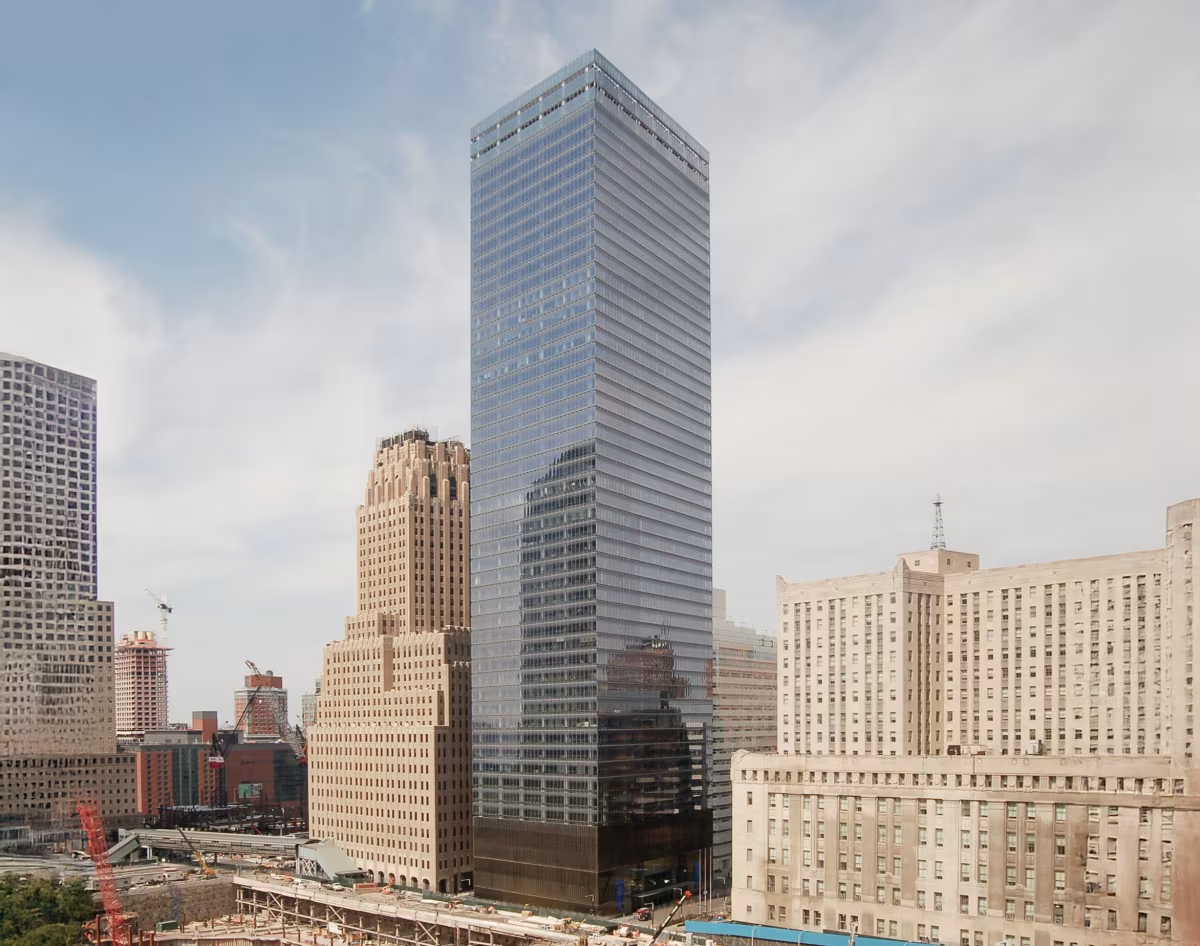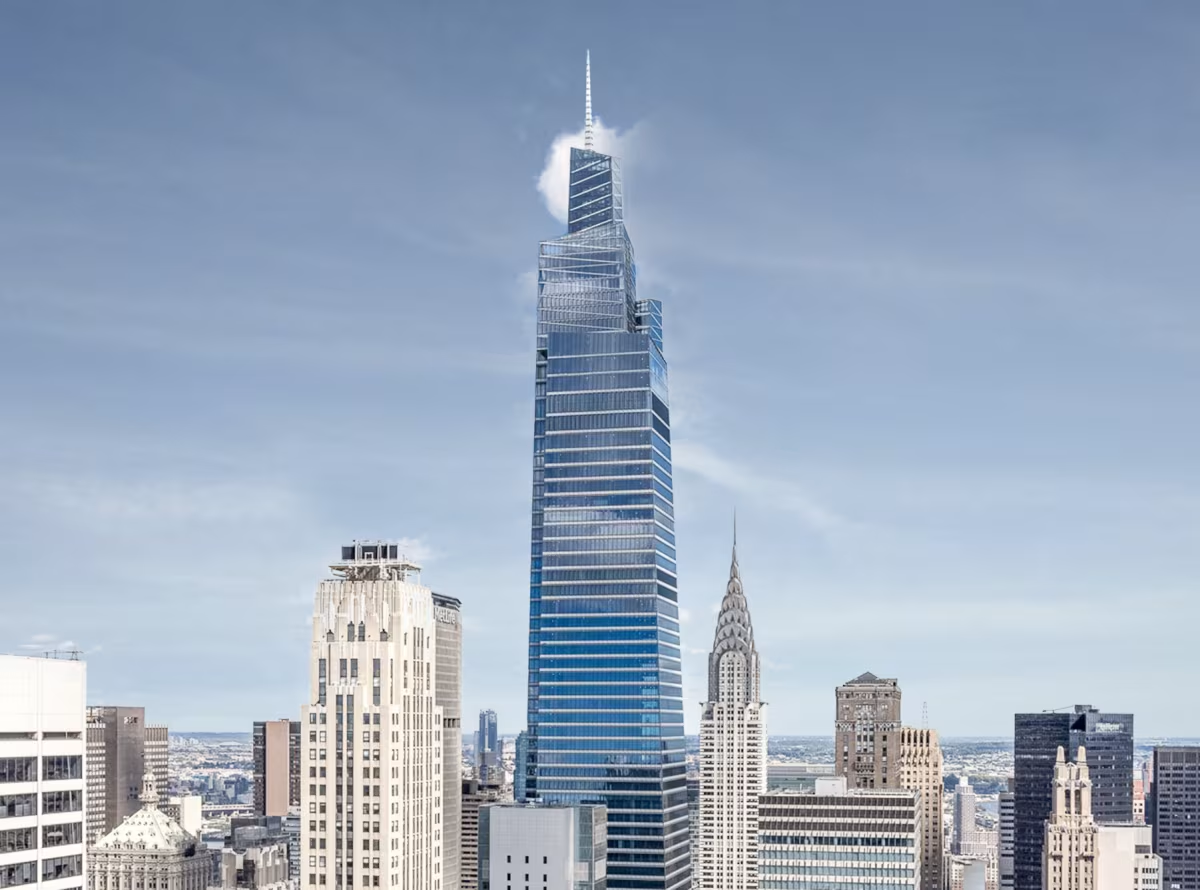7 World Trade Center vs One Vanderbilt


Comparing the 7 World Trade Center and the One Vanderbilt is interesting because they both rise in New York, NY, yet they were conceived by two different design teams, Skidmore, Owings & Merrill and Kohn Pedersen Fox Associates, and were completed at different points in time. They were finished more than a decade apart.
This contrast within the same city allows us to see how different creative minds interpreted the evolving needs of New York across time.
Let's take a closer look!
Height & Size
The One Vanderbilt is clearly the larger tower of the two, both in terms of height and number of floors. It rises to 1401ft (427m) with 67 floors above ground, while the 7 World Trade Center reaches 741ft (226m) with 51 floors above ground.
Of course, each project may have faced different briefs or regulatory constraints, which we don't really know about and could also explain the outcome.
Architectural Style
Both the 7 World Trade Center and the One Vanderbilt were designed in line with the aesthetic conventions of the Contemporary style.
At the time, this style was at the height of its popularity. So both Skidmore, Owings & Merrill and Kohn Pedersen Fox Associates followed what was in many ways expected of them, producing designs that fit comfortably within contemporary architectural norms, rather than breaking with convention.
Uses
Both the 7 World Trade Center and the One Vanderbilt were designed to serve as commercial towers, and that has remained their main use since their completion, serving similar roles in the urban fabric.
Structure & Facade
The two towers rely on different structural systems, reflecting distinct engineering strategies.
The 7 World Trade Center uses a Frame structural system, which relies on a regular grid of columns and beams to sustain its weight, while the One Vanderbilt uses a Trussed Frame system, that uses diagonal bracing in addition to beams and columns for stability.
Yet, when it comes to their facade, they both employed the same solution, a Curtain Wall facade.
A curtain wall is a non-load-bearing facade hung from the structural frame. It is anchored to floor slabs and transfers only its own weight and wind loads, allowing for sleek, glassy exteriors.
| 7 World Trade Center | One Vanderbilt | |
|---|---|---|
| Skidmore, Owings & Merrill | Architect | Kohn Pedersen Fox Associates |
| 2002 | Design Ended | 2016 |
| 2002 | Construction Started | 2017 |
| 2006 | Year Completed | 2020 |
| Contemporary | Architectural Style | Contemporary |
| Commercial | Current Use | Commercial |
| 51 | Floors Above Ground | 67 |
| 1 | Floors Below Ground | 4 |
| 207 | Last Floor Height | 330 |
| 226 m | Height (m) | 427 m |
| Frame | Structure Type | Trussed Frame |
| Steel | Vertical Structure Material | Steel |
| Poured Concrete Over Metal Decking | Horizontal Structure Material | Poured Concrete Over Metal Decking |
| No | Facade Structural? | No |
| Glass | Main Facade Material | Aluminium, Glass, Terracotta |
| Tishman Construction | Main Contractor | AECOM Tishman Construction |
| OTIS Elevators | Elevator Company | Schindler |
| Jaros Baum & Bolles | MEP Engineer | Jaros Baum & Bolles |
| WSP Cantor Seinuk | Structural Engineer | Severud Associates Consulting Engineers |
| Permasteelisa Group | Facade Consultant | Vidaris |
| NY | State | NY |
| New York | City | New York |
| 250 Greenwich Street | Address | 1 Vanderbilt Avenue |